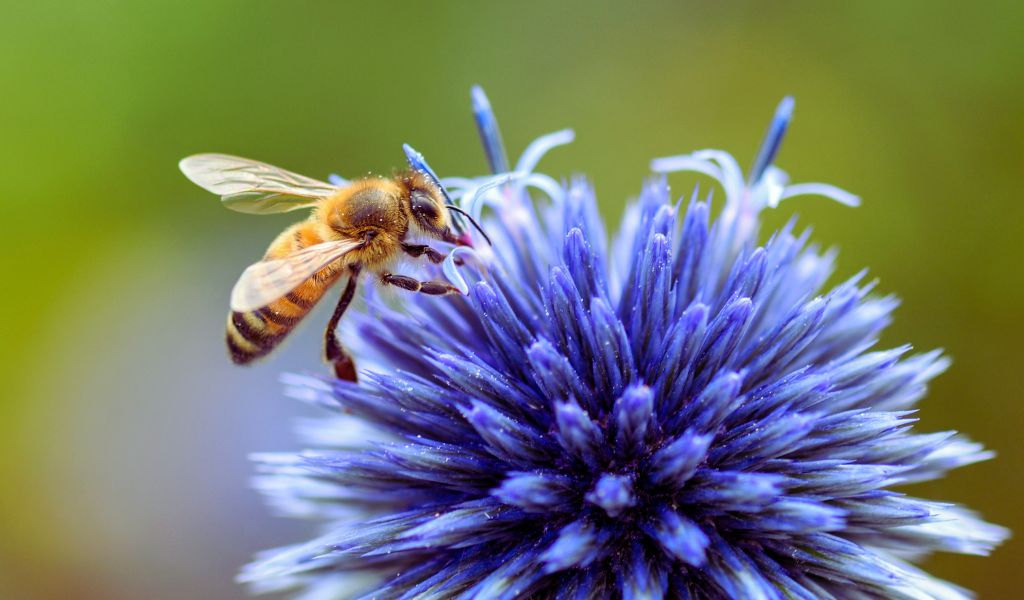If your dog eats a bee, act calmly and quickly. Remove the stinger if visible, monitor for distress, and contact your vet. Prevent future incidents by training your dog and creating a bee-free environment. Bee stings can be dangerous, watch for symptoms. Avoid inducing vomiting and consult your vet for medication. Prioritize your dog’s safety by knowing what to do if they eat a bee.
Dogs are curious creatures and, at times, their curiosity can lead them to unexpected situations.
One such situation is when a dog eats a bee. It’s not uncommon for dogs to chase after buzzing insects and accidentally swallow them.
However, it’s important for dog owners to be aware of the potential risks associated with a dog ingesting a bee.
What to Do if Your Dog Eats a Bee
If you witness your dog eating a bee, it’s crucial to take immediate action to minimise any potential harm. Here’s what you should do:
Stay calm
It’s natural to feel concerned when your dog ingests a bee, but it’s important to remain calm.
Dogs are intuitive animals and can sense your emotions. By staying calm, you can help your dog relax and prevent any unnecessary stress.
Monitor your dog
After your dog has ingested a bee, keep a close eye on them for any signs of an adverse reaction.
These signs may include excessive drooling, pawing at the mouth, swelling around the face or throat, difficulty breathing, or vomiting.
Remove the stinger
If you can see the bee’s stinger still embedded in your dog’s skin or mouth, try to carefully remove it.
Use a pair of tweezers or your fingers, but be cautious not to squeeze the venom sac, as it could release more venom.
Contact your veterinarian
Even if your dog appears to be fine initially, it’s still essential to contact your veterinarian for guidance.
They will be able to provide professional advice based on your dog’s specific situation and may recommend bringing your dog in for an examination.
Observe your dog
Keep a close watch on your dog’s behaviour for the next few hours. If any symptoms develop or worsen, seek immediate veterinary care.
Prompt medical attention is crucial in case of an allergic reaction or if your dog shows signs of distress.
Prevent future incidents
To avoid similar incidents in the future, consider implementing preventive measures such as training your dog to avoid chasing bees or other insects.
Additionally, it’s crucial to maintain a safe and bee-free environment for your dog.
Can a bee sting be dangerous for dogs?
Yes, a bee sting can be dangerous for dogs, especially if they have an allergic reaction to the venom. It’s important to monitor your dog for any signs of distress and seek veterinary care if necessary.
What are the signs of an allergic reaction in dogs?
Signs of an allergic reaction in dogs may include swelling, hives, difficulty breathing, vomiting, diarrhea, weakness, or collapse. If you observe any of these symptoms, contact your veterinarian immediately.
Should I induce vomiting if my dog eats a bee?
It’s not recommended to induce vomiting if your dog eats a bee. Vomiting may cause additional harm, especially if the bee’s stinger is already in your dog’s digestive system. Contact your veterinarian for guidance instead.
Can I give my dog antihistamines for a bee sting?
It’s crucial to consult your veterinarian before administering any medication to your dog, including antihistamines. They will be able to recommend the appropriate dosage and provide guidance based on your dog’s individual needs.
How can I prevent my dog from eating bees?
To prevent your dog from eating bees, consider providing them with proper training to avoid chasing insects. You can also create a bee-free environment by removing any attractants, such as flowers or beehives, from your dog’s reach.
Are there any home remedies for bee stings in dogs?
While there are some home remedies that may help alleviate mild symptoms, it’s always best to consult your veterinarian for professional advice. They can recommend suitable treatment options based on your dog’s specific situation.
Conclusion and final thoughts
If your dog eats a bee, it’s important to act swiftly and calmly.
Monitor your dog for any signs of distress, remove the stinger if visible, and contact your veterinarian for guidance.
Remember, prevention is key, so take proactive measures to prevent future incidents.
By being prepared and knowledgeable about what to do if your dog eats a bee, you can ensure the safety and well-being of your furry companion.




